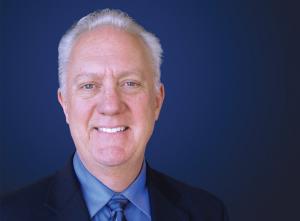What’s in It for Them?
John Hargrove is CEO of the Association of Energy Services Professionals. Jeff Ihnen is CEO of Michaels Energy.
There's an old line in the energy efficiency industry — there's nothing like a law to make you want to do something. It may not be an attributable quote, but it is certainly true.

Investor-owned utilities often develop and offer energy efficiency programs primarily because their legislators and regulators told them to. It's not odd that a company that sells a product, in this case electricity, would push back on a mandatory program that will reduce sales.
It goes against everything we ever learned in economics class. For years, utilities have been compensated for building things: power plants, transmission and distribution systems, substations, curbside and ground-mounted transformers, to name a few.
The utilities had to demonstrate need, prudency, and cost effectiveness. The more regulators approved utilities adding assets to rate base through the regulatory processes, the more the utilities built and the more money they made.
In reality, though, utilities have a variety of reasons for implementing energy efficiency programs. That list is growing longer every day in this era of competing distributed photovoltaic generation. The issue is integration of those assets with the utility's distribution system.
 John Hargrove: Everyone knows everyone else. Community engagement with local Otter Tail personnel is a vital part of program success.
John Hargrove: Everyone knows everyone else. Community engagement with local Otter Tail personnel is a vital part of program success.
Energy efficiency zealots like us have made the case for years that energy efficiency should be the first option that utilities choose. It will reduce demand, enabling them to delay or avoid the construction of new capacity and delivery assets to meet that demand. It will also reduce pollution, reduce consumption of fossil fuels, improve the environment, and reduce costs for customers. If there was ever a no-brainer, this is it.
To provide some support for that brash statement, we talked with a couple of our friends at two small utilities: Otter Tail Power Company and Cedar Falls Utilities. We asked them what their primary drivers are for implementing energy efficiency-related programs.
Otter Tail embraces energy efficiency for three overarching reasons: maintaining low energy costs, customer satisfaction, and economic development and sustainability. Energy efficiency is the lowest-cost, fastest and cleanest resource they can deploy to meet the energy needs of customers.
Cedar Falls Utilities is a municipally owned public utility company serving nineteen thousand customers in and around Cedar Falls, Iowa. The company provides water, electricity, natural gas, high speed internet and cable television to its customers, not to mention proudly posting the Chicago Cubs schedule on their website.
With a relatively small service territory of ninety square miles, being directly involved with their customers is easy for the company. It's also mandatory, according to their way of doing business.
"We offer a variety of programs to our customers because it is the right thing to do and our customers like having support in controlling their energy costs. From a supply perspective, it helps us avoid the need to procure additional generation and transmission capacity," said Steve Bernard, Assistant General Manager of Cedar Falls Utilities.
Over the past thirty years, some of CFU's unique programs have included the enforcement of local building energy codes, on-bill financing, the sizing of air conditioning units under the residential A/C rebate program, and smart thermostat pilot programs. CFU also became one of the first utility sponsors of the Energy Star Verified Installation program.
To offer these types of programs, CFU takes a very hands-on, partnership-style approach to working with their customers. The company spends about 2-3 percent of its revenues on energy efficiency, achieving an average annual savings level of 0.75 percent of electric sales and 0.55 percent of natural gas sales.
Otter Tail serves 131,500 customers in 422 communities with a service area spanning seventy thousand square miles in western Minnesota and the eastern Dakotas. With a vast footprint of sparsely populated service territory, anyone in the energy efficiency business would think this a very challenging scenario in terms of cost-effective efficiency delivery.
Not so. Otter Tail has consistently exceeded Minnesota's aggressive energy savings target of 1.5 percent of sales. "We partnered with customers to surpass our target and achieved savings of 2.75 percent in 2016," said Jason Grenier, manager, market planning.
For the current triennial energy efficiency plan, Otter Tail will target 2.26 percent of sales from energy efficiency. Why would a company set a goal higher than that mandated by the state legislature? The answer: good policy that rewards great energy efficiency portfolios.
Minnesota statutes allow for performance incentives when utilities surpass their goals. Investors like that.
It may seem that achieving these savings is expensive, especially over the sprawling tundra of the north-central Midwest. Again, not so. Otter Tail's programs are so cost effective they achieve the unthinkable: they pass the vaunted ratepayer impact measure, aka the RIM test. Passing the RIM test decreases prices for all customers, including those who do not participate in Otter Tail's portfolio of programs.
How do they do it? Customer satisfaction and community engagement. Otter Tail communities are tiny by nearly any measure. Everyone knows everyone else in these communities and therefore, community engagement with the local Otter Tail personnel is a vital part of program success. Old fashioned word of mouth thrives.
Local decision making, unlike meeting regulatory requirements handed down by the legislature and regulators, allows utilities like CFU to focus on what is best for their specific customer base. Regardless of how it contributes towards CFU's annual electric or gas goals.
Steve Bernard of CFU states, "When you look at a program such as helping enforce the energy code locally, you aren't traditionally able to count savings towards your gas or electric regulatory goals. However, we often choose to do these types of programs anyway, because they do save energy. They offer many non-energy benefits like improved building construction and increased customer comfort and satisfaction."
Bernard continues, "We see these efforts as the best way to reduce energy consumption and save our customers money, all the while reducing the need for additional capacity to meet customer load growth."
Besides, making your customers more financially stable is a win-win economic development strategy. Low energy costs and customer satisfaction are vital ingredients for community economic development and sustainability.
Otter Tail Power Company understands this as well as anyone. Greiner says, "Our communities compete for jobs and residents against larger metro areas including Fargo-Moorhead and the Twin Cities." What is good for the customer is good for the utility serving the customer!
Perhaps we can call it the virtuous circle. Embrace energy efficiency; build customer satisfaction with local engagement; generate inexpensive savings to put downward pressure on energy prices. Leave more money in customer pockets to make the territory economically attractive; maintain happy customers who continuously improve their positions, create shareholder and stakeholder value.
Take a minute and look for the downside in that approach to your business. The energy world is changing. What it was twenty-five years ago, it is no longer. What it is now, it will not be twenty-five years from now. Forward-thinking companies such as Otter Tail and CFU are working to thrive in the new world, not be run over by it.
Progressive utilities should work to make energy efficiency their first fuel when it comes to meeting growing demand. Energy efficiency as a resource is cheaper, cleaner, faster, and better for the environment.
Utility companies that don't have the flexibility to adapt to a changing market had better get it. Some investor-owned utilities need to change their legislative/regulatory environments to allow them to offer more products and services. Otherwise, someone else will.
Utilities need to make sure they can not only deal with but can thrive through market disruptions, including competition. They need to provide their customers or co-op members with choice relative to their energy use, ability to access renewables, control over their use and data, etc.
So, small and medium utilities, when it comes to offering energy efficiency programs, what's in it for you? Seems obvious to us, and to those who are doing it.



